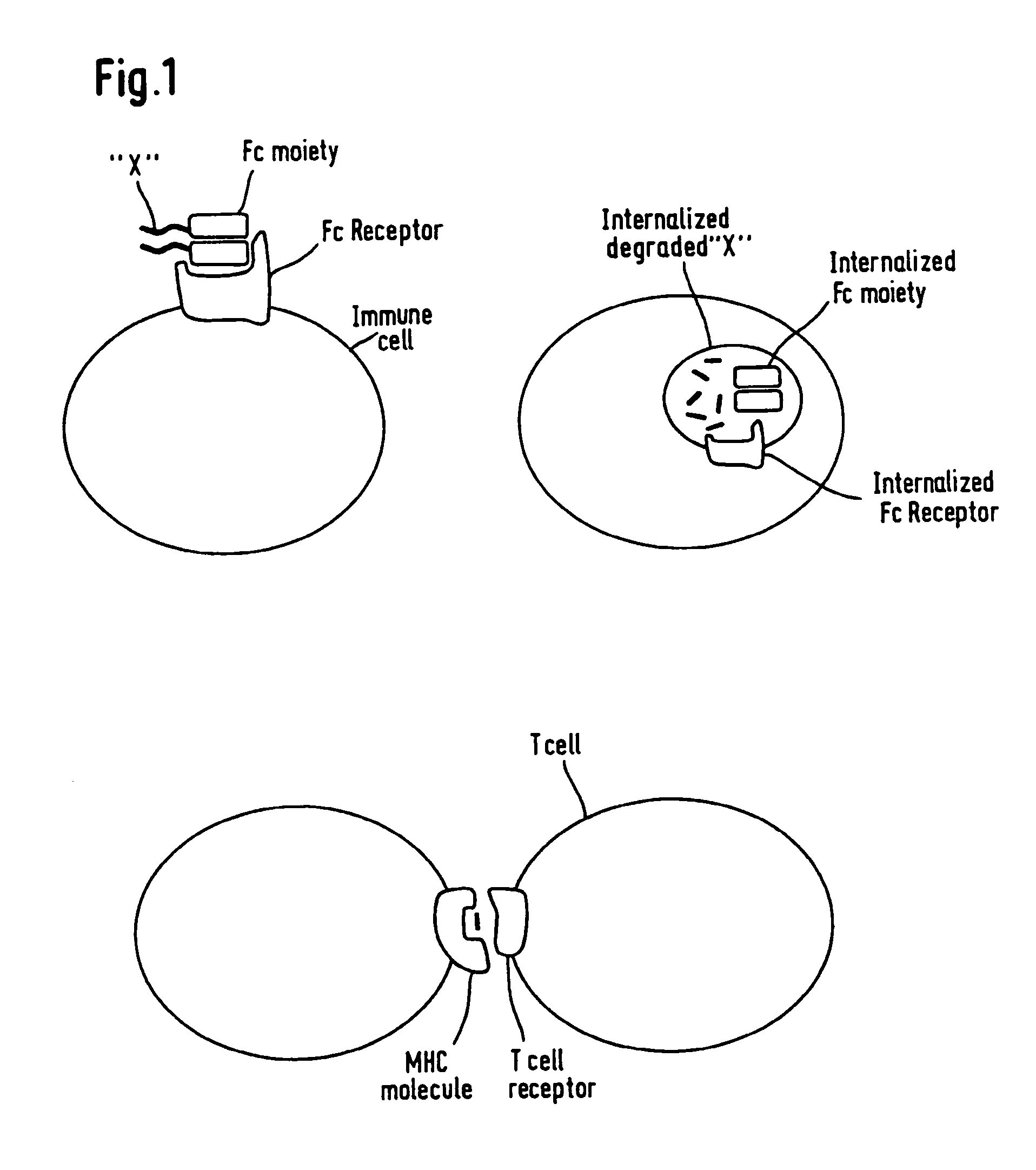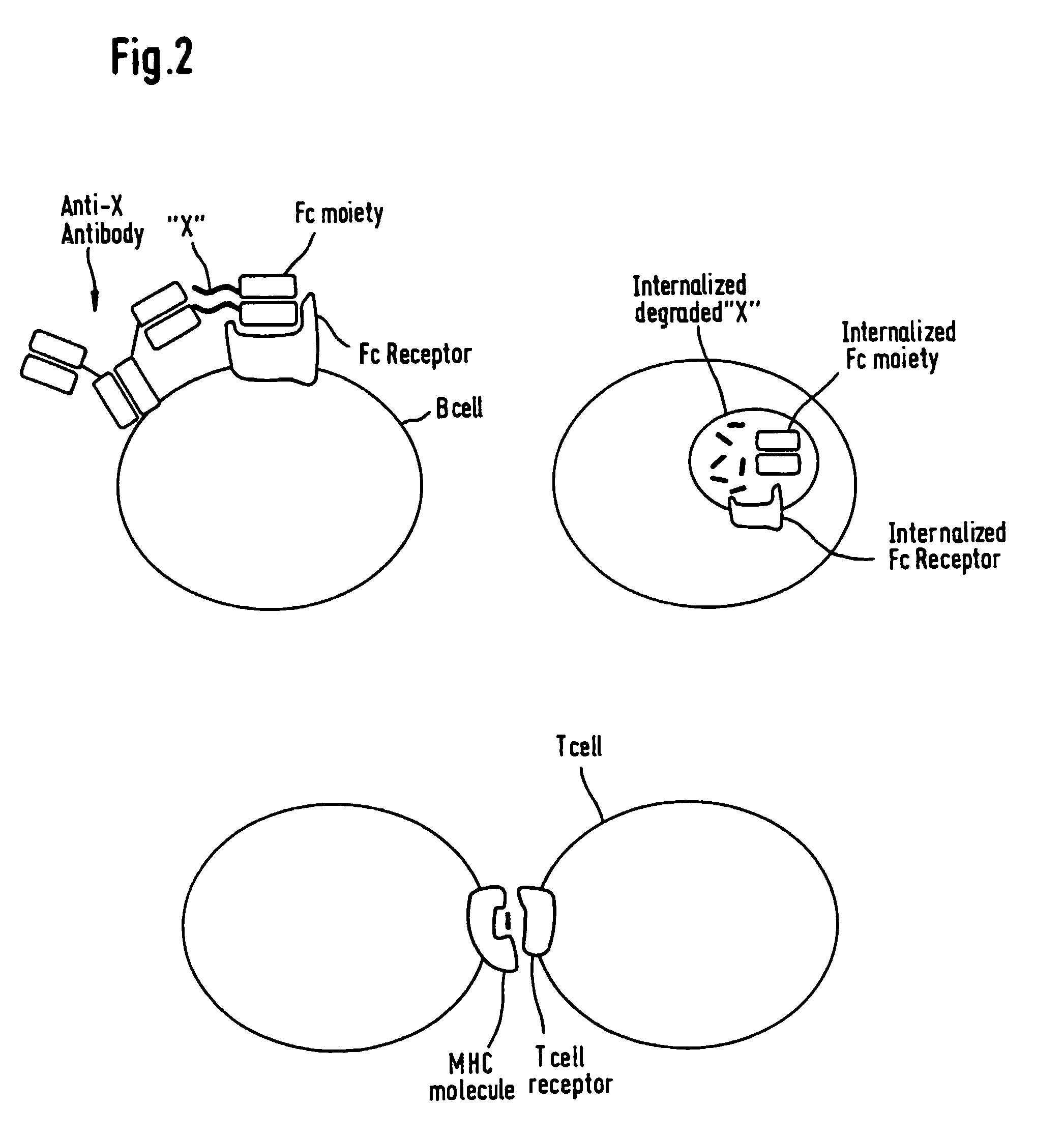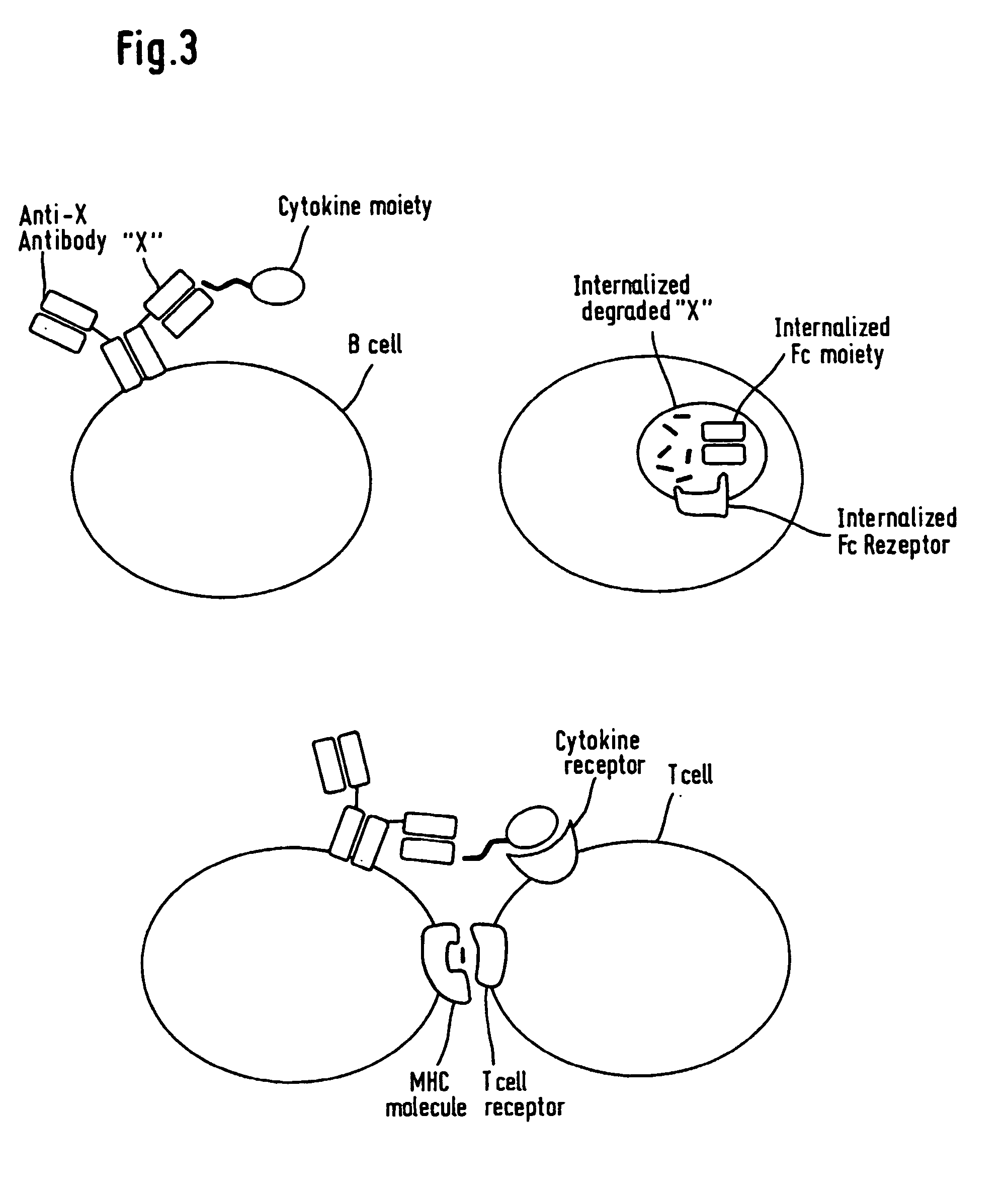Anti-KSA/IL-2 fusion proteins with reduced immunogenicity
a fusion protein and immunogenicity technology, applied in the field of modified artificial proteins, can solve the problems of inapplicability of processes, patients may develop allergic sensitivity to murine antibodies, and inability to treat, and achieve the effect of convenient and effective computational methods
- Summary
- Abstract
- Description
- Claims
- Application Information
AI Technical Summary
Benefits of technology
Problems solved by technology
Method used
Image
Examples
example 1
[0213]The following example describes in detail a preferred method for identification of immunogenic sequence regions (T-cell epitopes) within the sequences of the fusion proteins as disclosed in this invention. However, it should be pointed out, that said molecules can be obtained by other known methods.
[0214]The identification of T-cell epitopes of the molecules which were modified in order to obtain the immunoconjugates according to the present invention can be achieved by different methods which are described in the prior art (WO 92 / 10755 and WO 96 / 40792 (Novo Nordisk), EP 0519 596 (Merck & Co.), EP 0699 755 (Centro de Immunologia Moelcular), WO 98 / 52976 and WO 98 / 59244 (Biovation Ltd.) or related methods.
[0215]Advantageous immunoconjugates, however, can be obtained if the identification of said epitopes is realized by the following new method which is described herewith in detail:
[0216]There are a number of factors that play important roles in determining the total structure of...
example 2
De-immunized Forms of Fc-Leptin
[0279]Leptin is a secreted signaling 146 amino acid residue protein involved in the homeostatic mechanisms maintaining adipose mass (e.g. WO 00 / 40615, WO 98 / 28427, WO 96 / 05309). The protein (and its antagonists) offers significant therapeutic potential for the treatment of diabetes, high blood pressure and cholesterol metabolism.
[0280]Fc-leptin is a fusion protein for which the serum half-life is profoundly improved compared to leptin itself (WO 0040615). However, certain forms of Fc-leptin, such as when the Fc is derived from human IgG1 or human IgG3, have the potential to show enhanced immunogenicity under certain circumstances, such as administration by subcutaneous injection. In a Phase I clinical trial, leptin alone was found to be at least somewhat immunogenic. The invention discloses sequences identified within the leptin primary sequence that are potential T-cell epitopes by virtue of MHC class II binding potential. This disclosure specifically...
example 3
De-immunized Forms of Fc-IL-1Ra
[0287]The present invention provides for modified forms of an interleukin-1 receptor antagonist (IL-1Ra) with one or more T-cell epitopes removed. IL-1 is an important inflammatory and immune modulating cytokine with pleiotropic effects on a variety of tissues but may contribute to the pathology associated with rheumatoid arthritis and other diseases associated with local tissue damage. An IL-1 receptor antagonist able to inhibit the action of IL-1 has been purified and the gene cloned [Eisenburg S. P. et al (1990) Nature, 343: 341–346; Carter, D. B. et al (1990) Nature, 344: 633–637]. Others have provided IL-1Ra molecules [e.g. U.S. Pat. No. 5,075,222]. Recombinant forms of this protein have therapeutic potential in disease settings where the effects of IL-1 are deleterious. However, there remains a continued need for IL-1Ra analogues with enhanced properties. Desired enhancements include alternative schemes and modalities for the expression and purif...
PUM
| Property | Measurement | Unit |
|---|---|---|
| Length | aaaaa | aaaaa |
| Length | aaaaa | aaaaa |
| Digital information | aaaaa | aaaaa |
Abstract
Description
Claims
Application Information
 Login to View More
Login to View More - R&D
- Intellectual Property
- Life Sciences
- Materials
- Tech Scout
- Unparalleled Data Quality
- Higher Quality Content
- 60% Fewer Hallucinations
Browse by: Latest US Patents, China's latest patents, Technical Efficacy Thesaurus, Application Domain, Technology Topic, Popular Technical Reports.
© 2025 PatSnap. All rights reserved.Legal|Privacy policy|Modern Slavery Act Transparency Statement|Sitemap|About US| Contact US: help@patsnap.com



